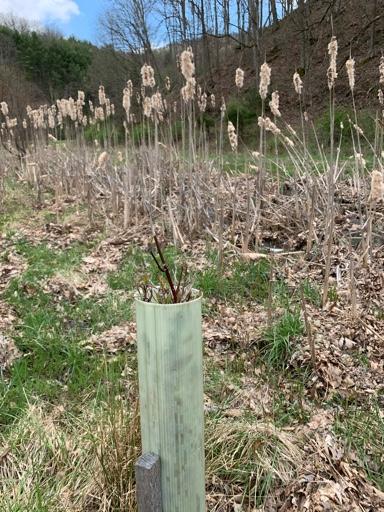If your deer density is very high at all, you best cage them until they get established (3-4 years). After that, they'll probably grow faster than deer can browse them back. If you don't cage them to get them established - and deer find them - you probably won't ever see a plum tree/bush, let alone a thicket. I caged the plant featured above for 3 yrs. For example, if you plant 3 plum plants - with 9' between each of them - in 5-6 years, you'll have 18' of great cover. You can straight line them, make an L shape (12' between plants for great thicket), V shape or the shape of your choice. A dozen plums, planted wisely, can produce a very nice thicket. Over time, and depending on land space, you can transplant root suckers to make additional thickets.

Good luck.
P.S. when folks talk about establishing a screen on the side of a food plot, plums in a straight line will do an excellent job, AND provide an additional food source.


